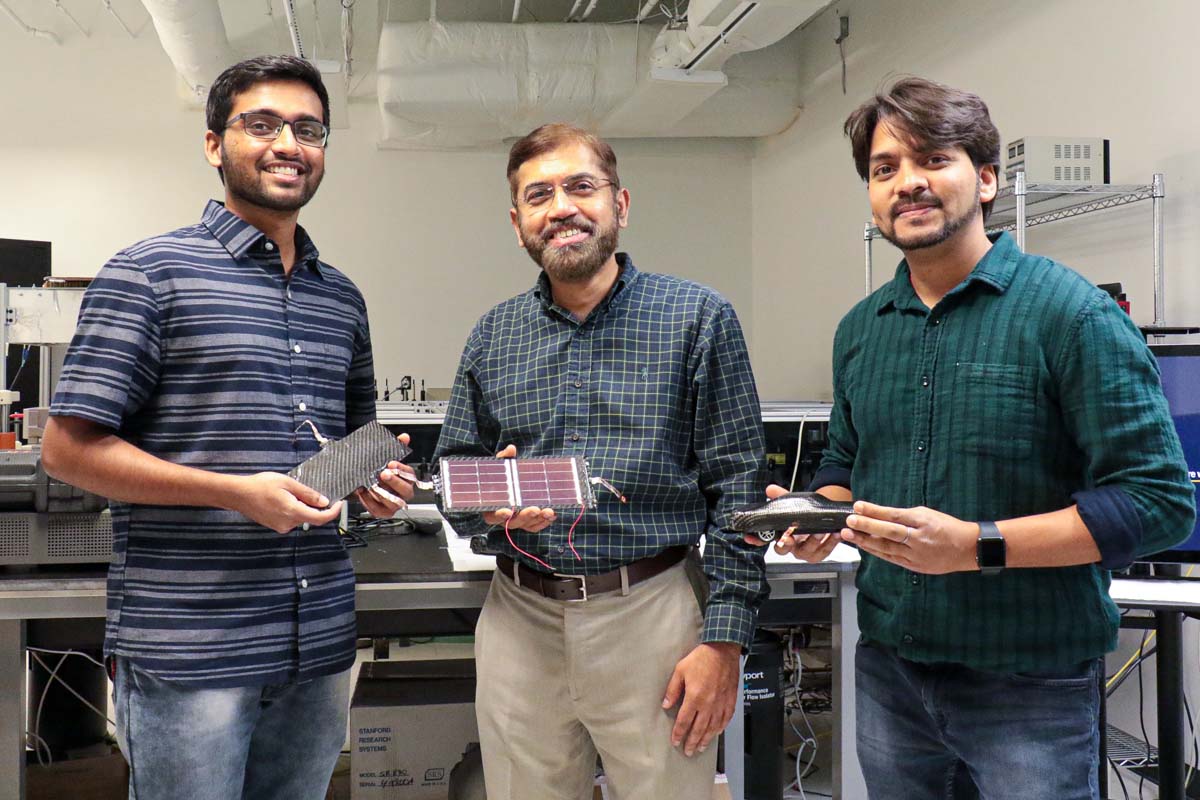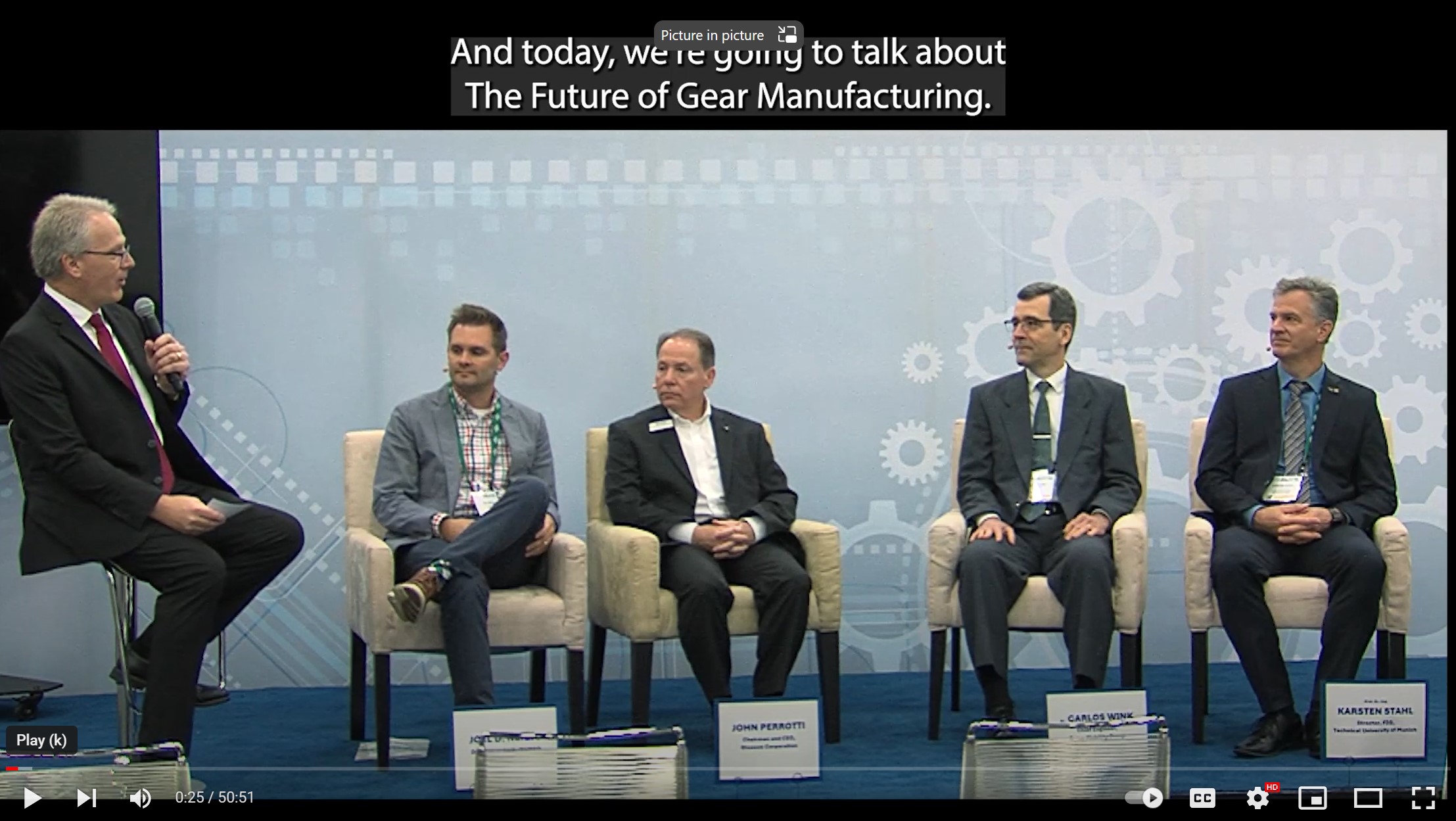Nanotechnology in Electric Vehicles
(This article was a sidebar to "The Numbers Game," which appeared in the May 2022 issue)
Like the charged power suit worn by Black Panther of Marvel Comics, UCF researchers have advanced NASA technologies to develop a power suit for an electric car that is as strong as steel, lighter than aluminum and helps boost the vehicle’s power capacity. The suit is made of layered carbon composite material that works as an energy-storing supercapacitor-battery hybrid device due to its unique design at the nanoscale level. The development could have applications in a range of technologies that require lightweight sources of power, from electric vehicles to spacecraft, airplanes, drones, portable devices and wearable tech.
“Our idea is to use the body shells to store energy to supplement the power stored in batteries,” says study co-author Jayan Thomas, the team leader and a professor in UCF’s NanoScience Technology Center and Department of Materials Science and Engineering. “The advantage is that this composite can reduce the weight of your car and increase the miles per charge,” he says. “It is as strong as or even stronger than steel but much lighter.”
 University of Central Florida researchers Kowsik Sambath Kumar, Jayan Thomas, and Deepak Pandey show the lightweight, supercapacitor-battery hybrid composite material they’ve developed. Kumar and Pandey are UCF doctoral students, and Thomas is a professor in UCF’s NanoScience Technology Center and Department of Materials Science and Engineering.
University of Central Florida researchers Kowsik Sambath Kumar, Jayan Thomas, and Deepak Pandey show the lightweight, supercapacitor-battery hybrid composite material they’ve developed. Kumar and Pandey are UCF doctoral students, and Thomas is a professor in UCF’s NanoScience Technology Center and Department of Materials Science and Engineering.
The material, when used as a car body shell, could increase an electric car’s range by 25%, meaning a 200 miles per charge vehicle could go an extra 50 miles and reduce its overall weight. As a supercapacitor, it also would boost an electric car’s power, giving it the extra push, it needs to go from zero to 60 mph in 3 seconds.
“This application, as well as many others, could be on the horizon one day as the technology advances in its readiness level,” says Luke Roberson, study co-author and a senior principal investigator for research and development at NASA’s Kennedy Space Center.
These materials could be employed as frames for cube satellites, structures on off-world habitats, or even as part of futuristic eyewear, such as mixed and virtual reality headsets.
“There are lots of potential infusion points within the economy as well as for future space exploration,” Roberson says. “This is, in my mind, a huge advancement of the technology readiness level to get us to where we need to be for NASA mission infusion.”
On cars, the supercapacitor composite material would get its power through charging, like a battery, as well as when the car brakes. “It’s charge-discharge cycle life is 10 times longer than an electric car battery,” Thomas said.
The materials used are also nontoxic and nonflammable, which is very important for passenger safety in case of an accident, he says.
“This is a huge improvement over past approaches that have suffered from issues with toxic material, flammable organic electrolytes, low life cycles or poor performance,” Thomas said.
Due to its unique design that uses multiple layers of carbon fiber, the material has significant impact and bending strength, essential for withstanding an auto collision, as well as significant tensile strength.
To construct the material, the researchers created positively and negatively charged carbon fiber layers, that when stacked and attached in an alternating pattern, create a strong, energy-storing composite.
Nanoscale graphene sheets attached on the carbon fiber layers allow for increased charge storing ability, while metal oxides deposited on attached electrodes enhance voltage and provide higher energy density. This provides the supercapacitor-battery hybrid with its unprecedented energy storage ability and charging life cycle, Thomas says.






